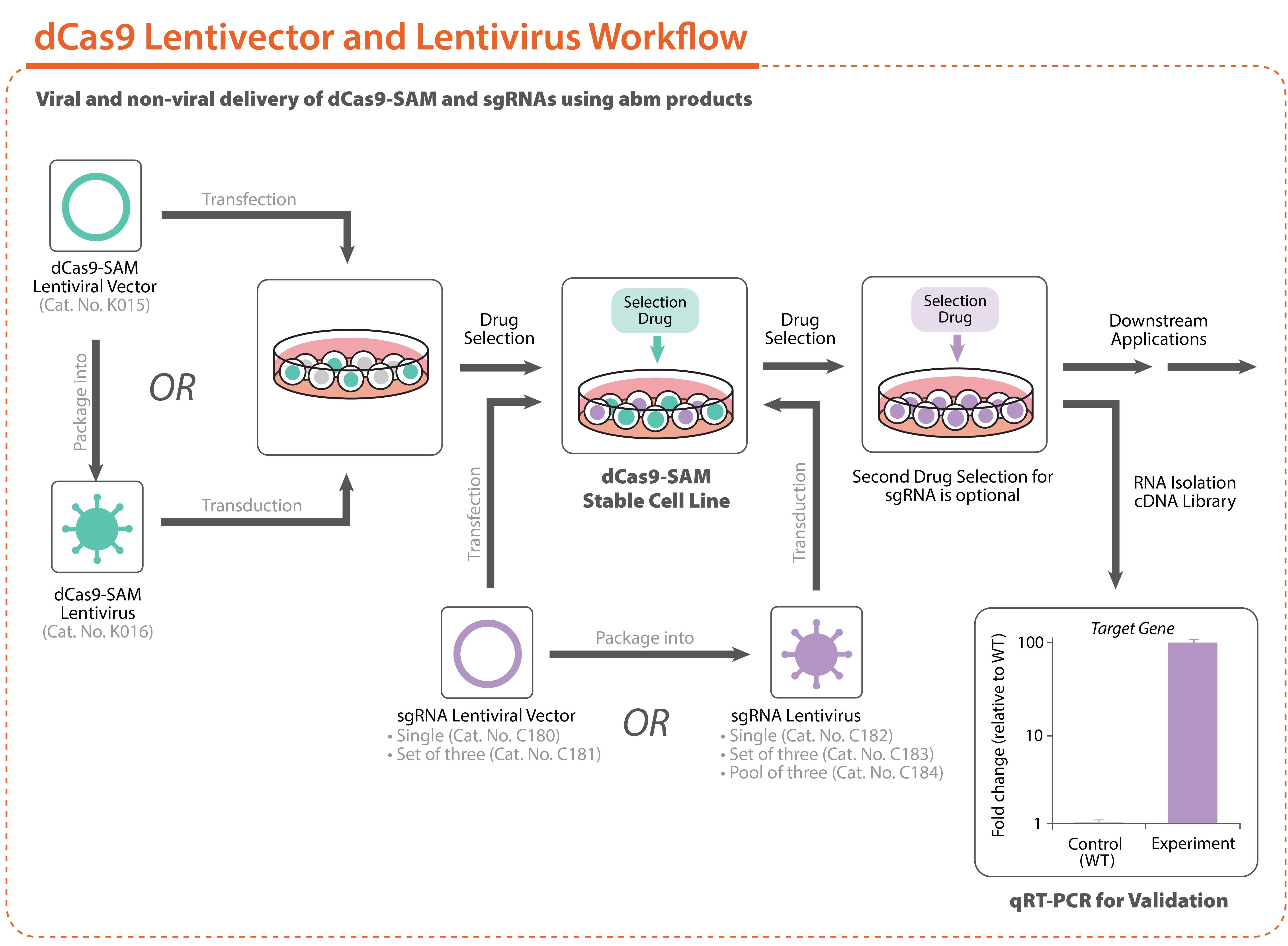
CRISPR Activation Library
CRISPR Activation (CRISPRa) allows you to selectively activate any gene by up to multiple thousand-fold. The key to CRISPRa is the dCas9-SAM complex, consisting of a catalytically-inactive Cas9 fused to a Synergistic Activation Mediator. The dCas9-SAM system can be targeted to the promoter of your gene of interest by expressing it in combination with specially-designed CRISPR Activation sgRNAs.
abm offers a complete collection of sgRNA-expressing CRISPR activation plasmids and viruses designed specifically for CRISPR Activation of any human, mouse, or rat gene. Our CRISPRa sgRNAs are available in lentivector or pre-packaged lentivirus for your convenience. Pair with our dCas9-SAM lentivector or dCas9-SAM lentivirus for the perfect CRISPR Activation experiment!
Key Features
- Lentiviral delivery for integration of genetic material into host cells, leading to long term sgRNA expression.
- Lentiviral vectors can be transfected for non-integrating, transient sgRNA expression.
- A set of three sgRNA vectors/viruses is available for added assurance of efficient gene activation.
Looking for sgRNAs for other purposes (gene repression, epigenetic modification, etc.)? See our Custom CRISPR AAV Vectors and Viruses.
Popular Products
Additional Resources on CRISPR Technology
Search Library
Primary Cells Collection
We offer a wide variety of primary cell lines
across more than 20 different cell systems.
Can’t find the cell line you’re looking for? Contact info@itsbio.co.kr.
abm web site 제품 검색 입니다.
Top Publications
| 01 |
Regulation of NKT cell-mediated immune responses to tumours and liver inflammation by mitochondrial PGAM5-Drp1 signalling.
|
| 02 |
Isorhapontigenin (ISO) inhibits invasive bladder cancer (BC) formation in vivo and human BC invasion in vitro by targeting STAT1/FOXO1 Axis. Jiang, G. et al. Cancer Prev Res. Published Online First April 14, 2016. doi: 10.1158/1940-6207.CAPR-15-0338
|
| 03 | Clinical significance of SNORA42 as an oncogene and a prognostic biomarker in colorectal cancer. Okugawa, Y et al. Gut (2015) doi:10.1136/gutjnl-2015-309359 |
Browse Products
Unit: 1.0 μg per target, 300 μl
Unit: 1.0 μg per target, 300 μl




